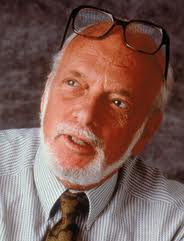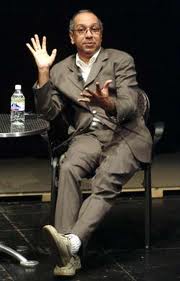
When it comes to theatre speak, directors share a vocabulary with others in the theatre. Much of what they talk about is connected to and includes vocabulary from other areas of the business. However, there are also terms that are fairly exclusive to directing. Here are a few of those that are connected specifically to directing.
Casting
Traditionally, a director casts the actors who will appear in the show they are directing. However, casting may also be done by the producer or by the director and the producer together. If a musical is being cast, then the music director and choreographer will also have input into the casting process. Casting involves various steps. It is one of the most important parts of directing. Casting a show correctly is, depending upon who you talk to, from 70- to 90-percent of successful directing.
There are two basic steps to the casting process- the audition and the callback. Auditions are where directors usually see a large number of actors for each role. Actors will sometimes be asked to do something they have prepared, a monologue or two and, if it’s a musical, a song. Or, instead of monologues, they may be asked to read a scene from the play or musical. They may also participate in a dance call with a choreographer.
If an actor gets a callback, that means they’ve passed the first step of the process that leads to casting. If an actor is called back, they are, in essence, being asked to audition again. The callback often involves actors performing scenes from the play, and if it’s a musical, singing songs and learning some choreography that is from the show. Some shows will have numerous callbacks before the production is cast. There may also be an interview involved at some point.
By the way with a professional show, an actor isn’t officially cast until they or their agent have negotiated a contract with the producer and all the paperwork has been signed.
Beats, Units, Scenes

Directors and actors will usually divide a play into units and beats but units and beats for directors are different than units and beats for actors. Actors analyze a script and score (orchestrate) it and use units and beats in this process. The scoring is specific to the character they are playing. When a director analyzes a play and puts in units and beats, these designations tend to be connected to the overall progression and development of the play and its actions, themes and resolution.
A beat is the smallest dramatic progression. It’s akin to a paragraph in prose. Like a paragraph, a beat introduces, develops and concludes a single idea or action. Any number of lines along with corresponding stage directions can compose a beat in a play. To be a beat, they must complete or encompass a single action, subject, objective, conflict, etc. There’s no standard length for a beat but on average one beat runs about six to eight lines.
Units are a collection of related beats. A unit, which is composed of many small actions, is by its nature a complete and important action. There’s usually a major shift of power, energy or focus when a unit is complete.
You’re thinking, “What’s a string of units called?” They’re scenes. Sometimes scenes are specifically noted in a play by the writer or sometimes they are indicated by the entrance or exit of a character (French scenes). Finally, scenes go together to comprise the largest segment of a play- an act.
Why does a director analyze beats, units, scenes and acts? Knowing how they function will allow the director to develop an understanding of the shifting energies in a play and how to utilize them when they direct the actors, work with the set and develop specific staging methods for the production.
Blocking

Blocking, which is also called staging, involves where the actors are on stage at any given time and when and where they move. It also includes stage business, fight choreography, exits and entrances and other such movement. Directors block shows in different ways. Some are very specific from the beginning and want actors to rigidly adhere to the blocking scheme they’ve developed. Other block in a looser manner, working with the actors to discover what works right at a given moment and then going back and refining the staging. Blocking is a major tool in developing character relationships, revealing changing energies and heightening dramatic tension and comic moments.
Other Term
There are many other theatre speak terms that are directly connected to directing, such as concept, through line, premise and tempo, rhythm, style and mood. We’ll be explaining these and many other terms in upcoming blogs focusing on theatre speak.

